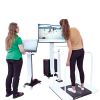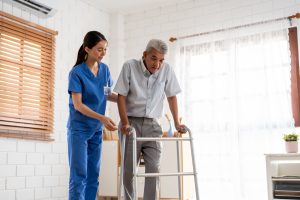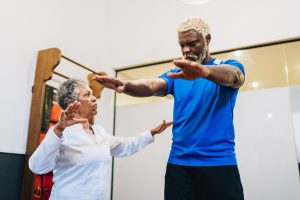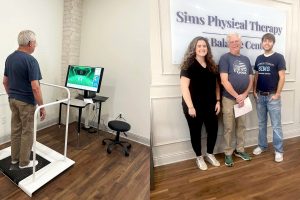
How Alfa Is Revolutionizing Balance Training Equipment for Physical Therapists
Practice Management“To really get where we need to [in balance training], you need to add the interactive factor, the neurological benefits, and the visual stimulation,” says Sims. According to Sims, the Alfa balance training equipment provides visual stimulation, promotes high repetition, increases patient engagement, eliminates compensation patterns, and fosters neuroplasticity.
Balance training equipment is an essential component of modern physical therapy, helping patients regain stability, coordination, and confidence in their movements. Recent advancements in therapeutic technology, like the Alfa gamified balance training device, are transforming how clinicians approach balance therapy. By combining advanced biofeedback, therapeutic gaming, and patient engagement, the Alfa is setting a new standard in balance therapy and improving patient outcomes.
In this article, we’ll explore how Jeremy Sims, a physical therapist with a thriving clinic, integrated the Alfa into his practice to address the growing need for specialized balance training. Leveraging the Alfa’s unique capabilities, Sims has redefined his clinic’s approach to balance therapy, creating better results for patients while meeting the demands of a diverse population.
How Sims Physical Therapy Transformed into a Specialized Balance Center
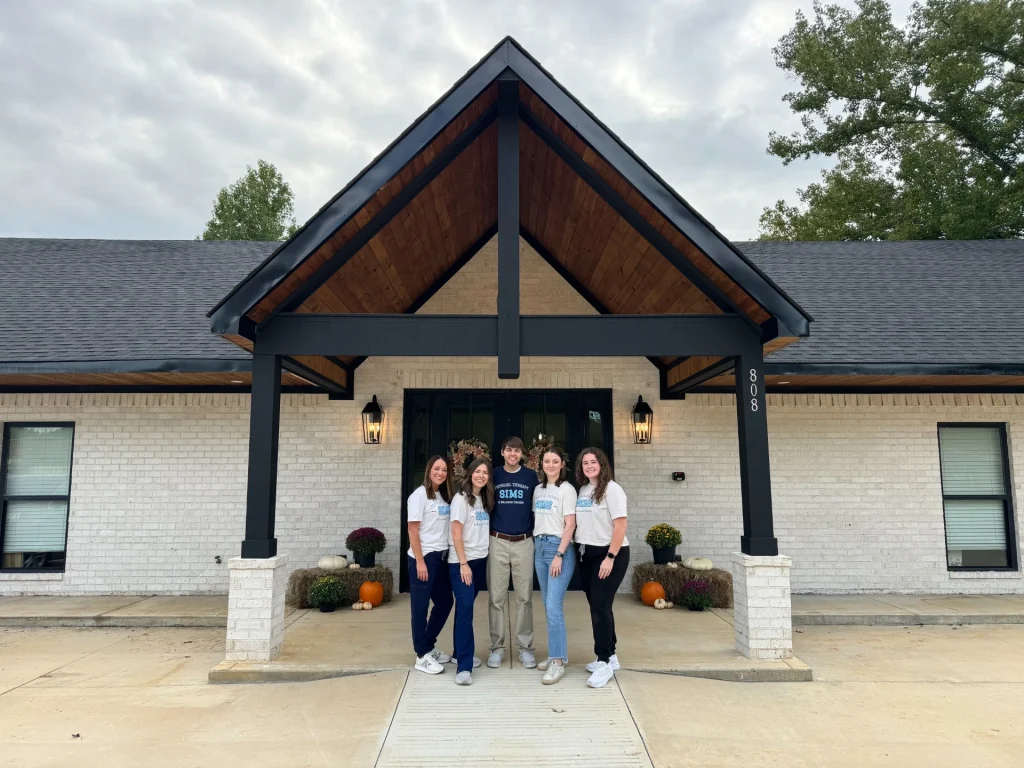
Responding to the Needs of the Community
Jeremy Sims opened his first physical therapy clinic just two years ago and quickly recognized a growing need for specialized balance training. Treating patients of all ages and conditions, he observed that balance was a critical but often overlooked aspect of recovery. As Sims incorporated more balance-focused therapies, his patients achieved better outcomes, and the clinic began attracting individuals specifically seeking balance-related treatments. This realization drove Sims to expand to a new, larger location in October 2024, featuring a dedicated balance wing to better serve his community’s needs.
Finding New Balance Training Equipment
To outfit the newly specialized Sims Physical Therapy and Balance Center, Sims sought out cutting-edge balance training equipment that would provide an engaging experience. The Alfa stood out as a sleek, streamlined solution that combines therapeutic gaming with advanced visual and biofeedback capabilities. This has allowed Sims to incorporate more effective balance training exercises, helping his patients achieve better outcomes.
“To really get where we need to [in balance training], you need to add the interactive factor, the neurological benefits, and the visual stimulation,” says Sims. The Alfa’s gaming capabilities is one of the primary drivers of its clinical efficacy. According to Sims, gamified balance training provides visual stimulation, promotes high repetition, increases patient engagement, eliminates compensation patterns, and fosters neuroplasticity. These elements not only help patients build physical skills that transfer seamlessly to real life, but also make therapy more enjoyable, reducing missed appointments and improving overall outcomes.
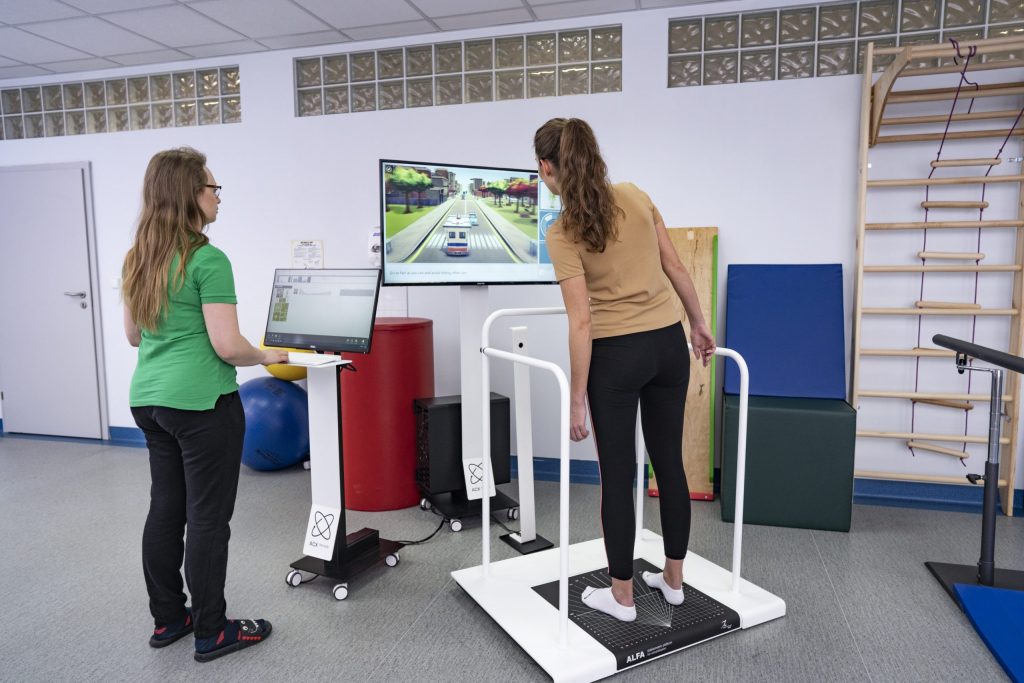
Clinical Benefits of Gamified Balance Training Equipment in Physical Therapy
Realtime Visual Feedback for Faster Progress
Without gamified balance training equipment like the Alfa, an example of a simple balance exercise is stepping over a cone. According to Sims, this is a good starting point, but real progress comes with advancing to exercises that involve the visual element of balance. “You don’t get the same effect if you just do simple exercises of shifting your weight or guiding patients through that. You need a visual or biofeedback aspect like the Alfa.” says Sims.
Early in physical therapy, Sims will start patients with games requiring simple weight shift while interacting with objects on the screen. This helps patients learn their neutral stance, movement timing, and how much they need to deviate (weight shift) to hit the target or avoid the obstacle. “Patients can learn more than they ever could before because they get the instant feedback from the visual aspect of it,” he says.
Eliminating Movement Compensation Patterns
In the early stages, Sims notes the Alfa helps eliminate movement compensations that many patients have developed before starting therapy. Patients may rely on improper movement, such as shifting their trunk without engaging the ankles, turning their head, or using their arms to compensate. However, these compensatory movement patterns are ineffective in the game environment, forcing patients to engage the correct muscles and movements to succeed.
“They’re actively making corrections themselves somebody else telling you and it’s all in real time,” he says. This self-guided feedback helps patients learn more quickly and build confidence. Over time, patients progress from simple weight shifting exercises to more complex activities, like simultaneous bidirectional movements and fine-tuning their speed and force. The visual feedback and gradual progression ensure that patients eliminate compensatory patterns and build more functional, coordinated movements that translate to real-life activities.
High Repetition Boosts Neuroplasticity
Another major driver of clinical outcomes is the high repetition associated with therapeutic gaming. Repetition is key to promoting neuroplasticity, improving proprioception, and building strength. Neuroplasticity is a major factor in any rehab therapy, but especially in balance and neurological conditions. The Alfa’s high repetition helps build and strengthen the pathways between brain and body.
“Repetition matters. Three sets of 10 is really not enough when it comes to balance. Therapy tends to underdose and with Alfa we’re able to give that right dosage,” says Sims. This constant repetition, paired with the cognitive demands of gameplay, strengthens brain-body connections and reinforces proper movement patterns.
The Alfa’s balance games create more repetitions than ever before, while maintaining high levels of engagement. This has helped Sims’ balance patients build strength, mobility, and proprioception more effectively than ever.
Seamlessly Transfer Skills to Real Life
The goal with any balance training equipment is to transfer those skills to real-life scenarios. This all-important skills transfer relies on a combination of high repetition, cognitive focus, and engagement during exercise sessions. These three elements work together to promote the neuroplastic changes necessary for lasting functional improvement.
In Sims’ words, “The Alfa makes it automatic due to repetition. You do a lot more weight shifting and repetitions than walking over a cone for three minutes. On the Alfa games, you’re weight-shifting constantly, you have to go left and right probably a hundred plus times in just a few seconds. You’re also more engaged, and that makes the skills transfer more automatic.”
Unlike simpler, traditional balance exercises, the Alfa’s interactive games push patients to complete significantly more repetitions in less time while keeping them mentally engaged. Patients also experience higher levels of engagement, which keeps them motivated and challenges their ability to apply their balance skills dynamically as the games’ difficulty increases. The result is a more natural transfer of these skills to real life, where they need to maintain stability during everyday tasks, react to unpredictable environments, and build confidence in their movement capabilities.
High Patient Engagement Creates Better Outcomes
With the Alfa’s gamified balance treatment, “The patient engagement is no comparison. With the Alfa, people use it and they don’t want to come off. They love to play it,” says Sims. This enthusiasm transforms what can sometimes be repetitive or intimidating exercise into an enjoyable and rewarding experience.
As a result, Sims says the Alfa has significantly increased the clinic’s retention rate. According to Sims, “Patients want to come back because of the Alfa. They’re more consistent with it, they’re not missing appointments as much because of the engagement, and that drives them to reach their goals and get better outcomes overall.” By reducing missed sessions, the Alfa ensures that patients stick to the treatment plans, which is critical for achieving lasting results.
Beyond enjoyment and consistency, high engagement encourages patients to push themselves further. Alfa’s games challenge patients to focus on the task, complete more repetitions, and control their movement. Sims’ patients look forward to beating their high score or advancing to more complex games. This ability to foster a sense of accomplishment improves physical recovery and creates a more positive and effective therapy experience.
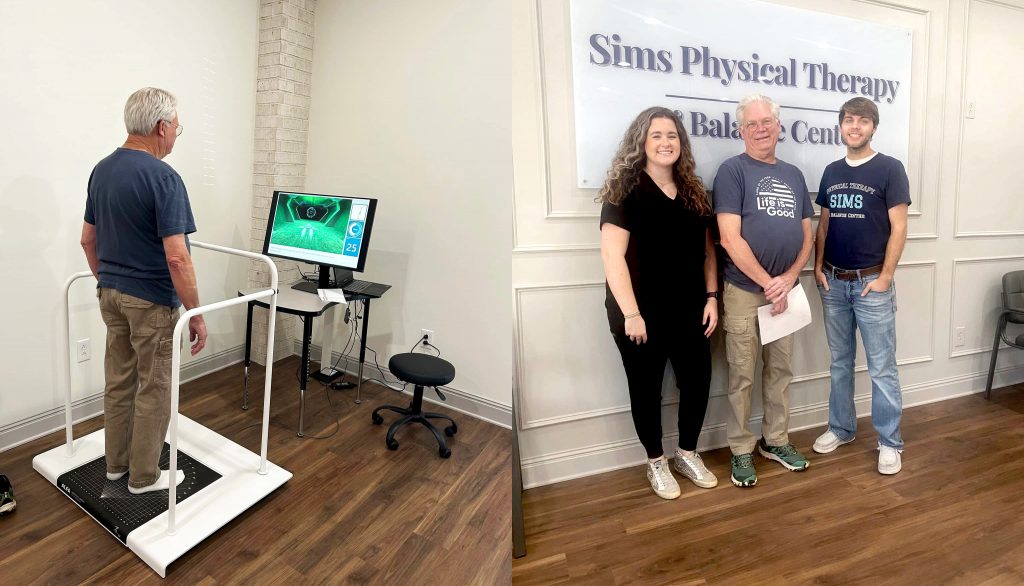
Real Patient Success Stories: Alfa in Action
Restoring Balance After Hip Surgery with Balance Training Equipment
By now, Sims has numerous patient success stories with the Alfa, but one stands out as one of the first patients ever to use the balance training equipment. This patient, an adult female, came to the clinic for hip surgery recovery. She was able to use the Alfa very early, learning gentle movements with the easier balance games. Sims notes, “Her balance after hip surgery has skyrocketed. She’s going much better than the majority do because we’ve been able to engage with the Alfa a lot earlier than you can most things.”
They key to her speedy recovery has been the Alfa’s ability to facilitate simple, easy movements for early intervention. The gamified interface helps patients who may be fearful about bearing weight on a body part post-surgery. Most importantly, it encourages patients to continue and challenge themselves while staying engaged throughout their recovery.
Neuropathy Treatment with Balance Training Equipment
In addition to musculoskeletal rehab, Sims also uses the Alfa for neuropathy treatment. Neuropathy can profoundly impact a person’s independence and quality of life, as Sims observed with one of his patients. This patient, who is otherwise very healthy and strong, struggled with balance issues caused by neuropathy. It disrupted even simple activities like climbing stairs and carrying boxes, which prevented him from helping his son move to college. This limitation was disheartening, and led him to withdraw from other activities, family interactions, and his community.
Through balance exercises with the Alfa, Sims helped this patient improve not just the physical symptoms of neuropathy but his overall wellbeing. By engaging the patient in gamified balance therapy, the Alfa helped him regain lost confidence and independence. Sims emphasizes that effective balance training often extends beyond physical recovery, positively influencing emotional and social factors. For this patient, balance therapy meant reclaiming his sense of purpose, connecting with his family, and participating more fully in his daily life.
Incorporating Gamified Balance Training Equipment in Your Clinic
Gamified balance training equipment has revolutionized the treatment experience for clinics like Sims Physical Therapy and Balance Center. The Alfa’s innovative gaming capabilities have transformed balance training into a more effective, engaging, and outcomes driven experience. Sims states, “It has been a game changer in my practice, not only in patient visits and their results but also the engagement…If you’re looking to do any kind of balance, the Alfa is the way to go.” From eliminating compensatory movement patterns to boosting neuroplasticity and improving patient engagement, the Alfa delivers measurable benefits. By integrating cutting-edge balance training equipment like the Alfa, clinics can not only enhance patient care but also improve outcomes and retention.
If you’re ready to elevate your approach to balance therapy, contact us today to learn more about how the Alfa can revolutionize your practice and improve the lives of your patients.

